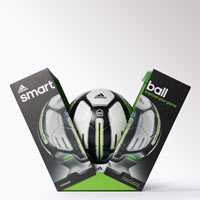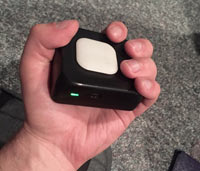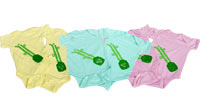Out with 2015, in with 2016: The changing face of technology

Pic courtesy - adidas.uk
Considering the unyielding forward march of technology, techKNOW would like to take this opportunity to, instead of providing a year-end wrap-up of old news, some up forecasts of technology and trends that have not just survived into 2016 that will likely thrive in the new year.
The first step in looking at these trends is mining the coverage provided by several tech blogs and news outlets of CES 2016 Unveiled, a precursor to the January 9 CES main event, where much of the year’s upcoming consumer products will be showcased. An interesting recent revelation about CES Unveiled was that space allocations for certain emerging technologies had been significantly increased, more than doubling in many cases. This tech included robotics, drones, 3D printing and virtual reality (VR) among a few more.
Hardware
It is not so much that technology trends for 2016 will involve wholly new tech but, rather, it is predicted that existing tech might finally come into its own or go deeper with its potential uses. For example, greater access to and the increased speed of 3D printing is facilitating mass customisation, which has also been further aided by a greater availability of, along with newer, raw materials. This is allowing not only personalised healthcare in terms of 3D printed organs and bones but changing the face of the medical field by facilitating the printing of pills, medical tools and even lab rats to shore up demand and customise further.
Additionally, 3D printing is also making it easier to commercialise the more niche-oriented products related to concepts like the Internet of Things (IoT), which is, in turn, pushing forward the grander designs of the Internet of Everything. Some examples showcased at the CES 2016 Unveiled roadshows, held in New York, Tokyo and other major capitals, included the Mimo Smart Baby Monitors, the Tzoa Environment Trackers and the Adidas miCoach Smart Ball, to name just a few. Two of these products have been funded via crowd sourcing platforms and are geared towards niche groups, tying in with IoT and wearable concepts, while the third, by international shoemaker Adidas, provides a novelty and coolness factor to its existing popularity through the offering of its own spin to the idea of a wearable coupled with its Smart Ball football coach app (if one can afford the hefty, all-in price tag of just under Rs. 32,000 that miCoach Smart Ball and app demands).
Another very interesting area that is being widely discussed is robotics and drones. Robotics has always been cool tech but it is now growing in day-to-day functionality, for example in the home, while drones are currently being looked at worldwide for their implications in advancing logistics and transport capabilities. Even beyond, drones are being tested for stopping fires, protecting endangered wide life in Africa, building walking rope bridges, delivering medical supplies and aid in war-torn and other disaster-struck areas, and even maintaining cities (refer the University of Leeds Self Repairing Cities project for more details on the latter).

Pic courtesy tzoa.com
At the same time, another longstanding technology, VR, is also set to finally come into its own, with the retail roll out of a lot of content and devices for end-consumer planned for 2016, including headsets from Oculus Rift, Sony, HTC and Samsung, which will hopefully generate mass appeal for this long awaited technology.A further area of concern for 2016 will be cybersecurity, with the emphasis now shifting to voice pattern recognition and other biometrics even in devices such as mobile phones, which will in turn be linked with mobile wallets, etc. Refer to Sujit Christy’s specialist column in the techKNOW page for more details about cyber security threats and predictions for 2016.
Software
It has been frequently said and repeated that the true technology revolution of the future is not going to be in hardware, but rather in software.
The year 2016 seems to be taking this oft-stated adage to heart. In fact, Google’s Sundar Pinchai has recently stated that Google will be incorporating Machine Learning (predictive learning) at all levels. Additionally, searching on platforms such as YouTube are predicted to, or may have already, overtaken conventional word searches while messaging apps are tipped to become the social media platforms of the new age. Another impending paradigm shift yet to hit is the upcoming Generation Z’s all mobile lifestyles supplanting many of the Millenials’ preferences towards to multiple devices, especially impactful when it comes to app development. So, however you look at it, software definitely plays a greater role in the immediate future.Interestingly, a few existing ideas are also set to take off thanks to recent strong showings. These include the sharing economy, as tapped into by Uber, AirBnB, along with mobile payments, which will “soon skyrocket” per comments by self-proclaimed futurist Brian Solis. He also identifies real-time capabilities of Big Data, once tied in with beacons at retail spaces, as allowing on-the-ground trends to be immediately taken advantage of.
Big idea

Pic courtesy mimobaby
However, it is a simple cost effective implementation of an age old idea, resulting in the cheap and simple desalination of sea water using pervaporation, which does not use electricity and is also cleaner, developed by researchers at Egypt’s University of Alexandria, which may prove to have the biggest impact not only for 2016 but also for many years looking forward, especially considering the dire straits that the world will be in when it comes to drinking water in the future.


